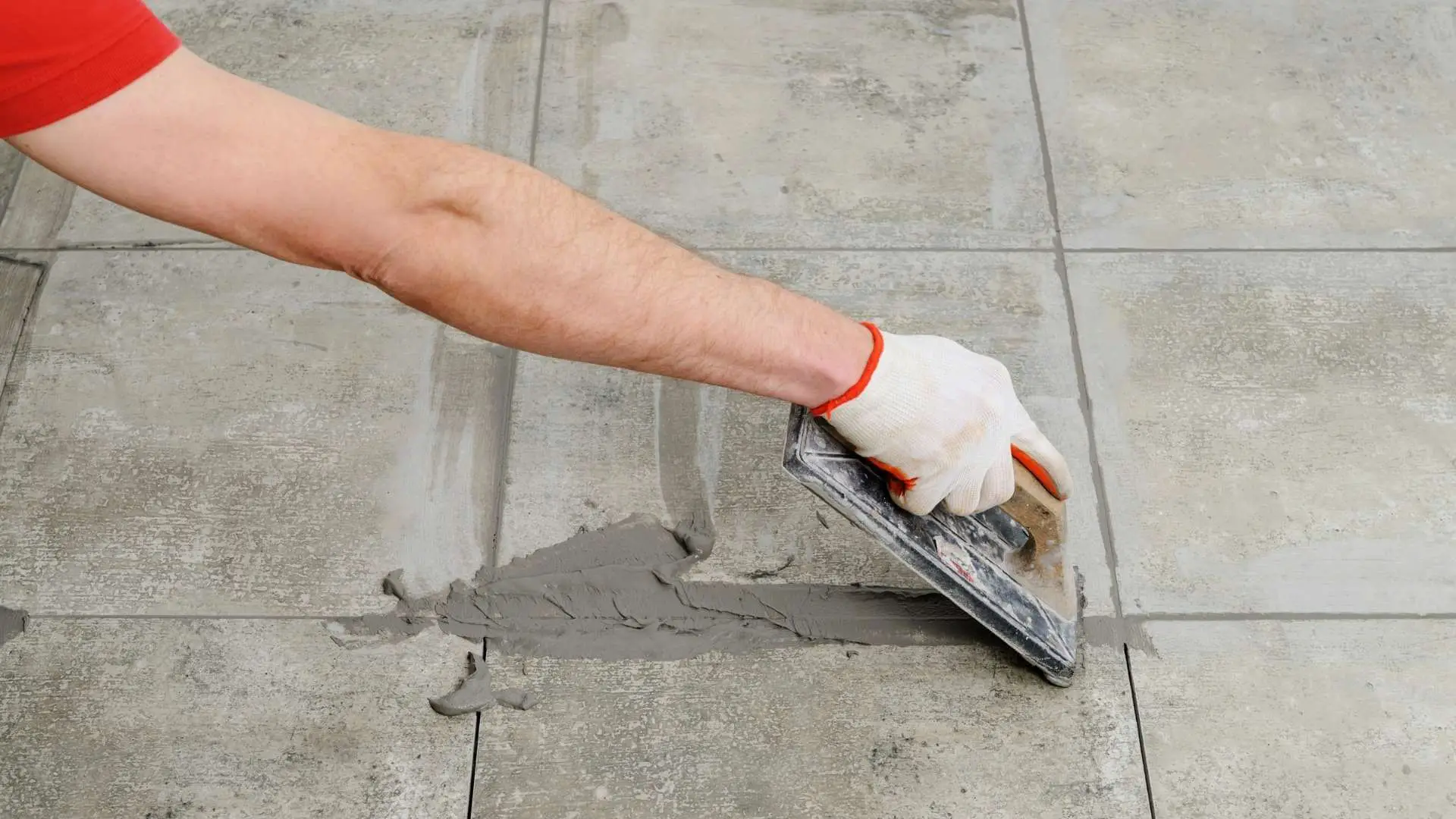As the old saying goes, mortar sticks and Grout fills. I believe and advise its best to use the suitable materials for each specific task when installing a tile floor to ensure effectiveness.
Thinset is an adhesive that sticks the tile to the subfloor beneath it. At the same time, Grout is a filler used in crevices or gaps between the tiles once the tile has been set.
So can you use thinset as grout? No! These two materials are better off not being switched as they would not pay in the long term.
However, the question is, can Thinset be used as Grout? You will find out as you go on. Let’s go deep into the Thinset Mortar and Grout separately with their primary function.
Related: How to Retile A Shower Floor
Thinset Mortar
Table of Contents
Mortar is a material used in masonry construction to fill the gaps between the bricks and blocks.
Mortar is a mixture of sand, a binder such as cement or lime, water, various polymers, water retention agents, latex, additives, and pigments. This allows it to be the base for tile installations.
The water retention agents help the ingredients hydrate when mixed with water and keep the thin-set hydrated when troweled onto a dry tile.
When the cement and lime bond, they create a sticky adhesive that hardens over time and binds the tile to the floor.
In the case of Grout, it takes on a matching color with the tiles, while Mortar doesn’t have pigments that could do that. It is either colored grey or white.
In the long run, the thinset Mortar will take on a dingy look, regardless of if it is cleaned regularly.
Grout
Grout is generally a mixture of water, cement, and sand and is employed in pressure grouting, embedding rebar in masonry walls, connecting sections of pre-cast concrete, filling voids, and sealing joints such as those between tiles.
Grout is quite similar to the thinset Mortar. The difference is that it has less lime and a higher quantity of sand, making it a thinner mixture.
Grout’s function is to fill the gaps between tiles and not stick the tile to anything, making it less sticky than thinset Mortar.
Also, it takes more water, so it cures differently; it takes longer. One of the advantages of Grout is it comes in different colors, unlike thinset Mortar, so that it can fit any design scheme. It hides dirt, so the tile does not look dingy over time.
You should also know that there are four types of Grout: epoxy, acrylic latex, sanded, and non-sanded.
The Sanded Grout, which is thicker and more robust, is best for larger tiles that have long grout lines to fill.
Unsanded grouts are best for areas of 1/8 inch or less. The efficiency of Grout depends on its formulation, compatibility with the material, pre-packaging, and ability to solve corrosion problems.
Grout is designed to have chemical resistance and withstand moments; it is easy to handle or clean, withstand movements, enhances color uniformity and improves tendon protection.
Now onto the big question you came here for;
Read: How to Fix Low Spots in Shower Floor
Can You Use Thinset as Grout?
Some people use it because they believe thinset boasts greater structural strength and can be used to fill in the gaps between tiles if the Grout isn’t available.
However, I’m here to tell you that Mortar is thicker than Grout, so it is not recommended as an alternative for most tile projects.
Mortar doesn’t flow as Grout does, and it can leave gaps or holes behind as it dries.
Therefore, it will crack and weaken or cause water to leak through in the long run. You are advised to only use Mortar as a substitute for Grout if the tile specifically calls for it.
Also, don’t even think about using Grout in place of Mortar; that’s an entirely different and ignorant story.
Read: How to Clean Soap Scum from Tile and Grout
Conclusion
You should know all about Grout and thinset Mortar and their function with all this information.
You should always check the manufacturer’s instructions on grout and tile packages to ensure you have the proper product for your particular job. I repeat I do not recommend thinset as a substitute for Grout.
We wrote this article about can you use thinset as grout to help give you guidance when faced with making a choice about using thinset as grout.
We hope you found it helpful and informative. If you did, please share it across your entire social media pages

